The sea lamprey has plagued the Great Lakes since the early 1800s when these parasitic invaders, native to the Atlantic Ocean, were first found in Lake Ontario in 1835. There they remained, until the completion of improvements to the Welland Canal which allowed the sea lampreys to bypass Niagara Falls and access the rest of the Great Lakes in the early 1900s. These new waters provided excellent spawning grounds, an abundance of host fish, and a lack of natural predators, allowing these highly reproductive parasites to thrive.
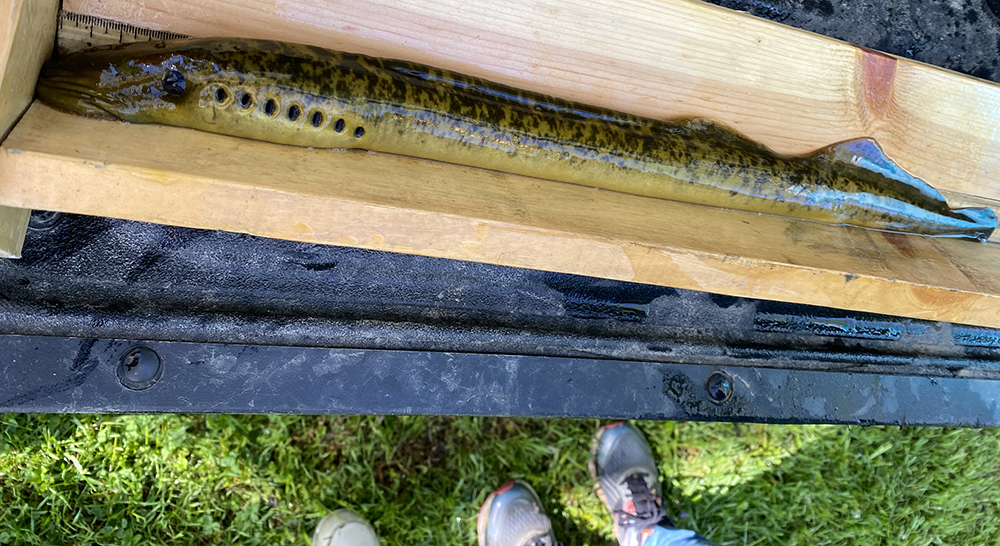
How Do Sea Lampreys Affect Sport Fish?
The sea lamprey dealt a significant blow to the Great Lakes sport fish populations such as brown trout, lake sturgeon, lake whitefish, ciscoes, burbot, walleye, catfish, and Pacific salmonids including chinook and Coho salmon, and rainbow trout/steelhead. Perhaps no fish species was hit harder than native lake trout populations. Prior to the infestation, over 15 million pounds of lake trout were harvested each year in the upper Great Lakes. Once sea lampreys were introduced though, that number shrank drastically to just 300,000 pounds and the species was nearly left extinct in Lake Huron and Lake Michigan. Sea lampreys attach to a host fish by its suction-cup mouth, ringed with sharp teeth, which enables it to it latch on to its prey. The lamprey then uses its rough tongue to remove the fish's flesh so it can feed on its body fluids by secreting an enzyme that prevents blood from clotting, like how a leech feeds off its host. It is estimated that one lamprey can kill about 40 pounds of fish every year. Host fish in the Great Lakes are often unable to survive sea lamprey parasitism, either dying directly from an attack or from infections in the wound after an attack. Those fish that survive an attack often suffer from weight loss and a decline in health and condition.
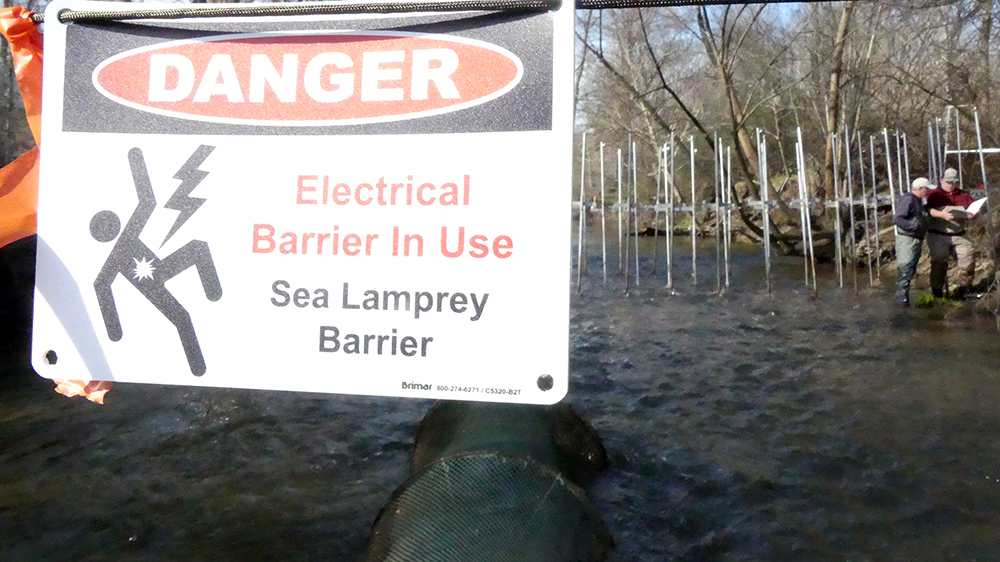
What Is Being Done to Eradicate Sea Lampreys?
Typically, lampricides/pesticides have been the primary control tactic. TFM (3-trifluoromethyl-4-nitrophenol) is applied in liquid form at a precise concentration to treat tributaries infested with larval sea lampreys. TFM acts physiologically to disrupt energy metabolism in larvae. Compared to other fish, sea lampreys have low levels of the enzymes used to eliminate TFM from their bodies which eventually leads to their death. As a result, fish other than sea lampreys remain relatively unaffected by TFM at the applied concentrations. While TFM has been extremally effective in targeting sea lampreys, there are four other species of lampreys that exist in the Great Lakes that are also being affected. Chestnut, silver, American brook, and northern brook lampreys are also persistent. However, the American brook and northern brook species are not parasitic, do not feed on fish, and do not feed in their adult life stage. As a result, biologists have been searching for alternative methods to target only the parasitic lampreys.
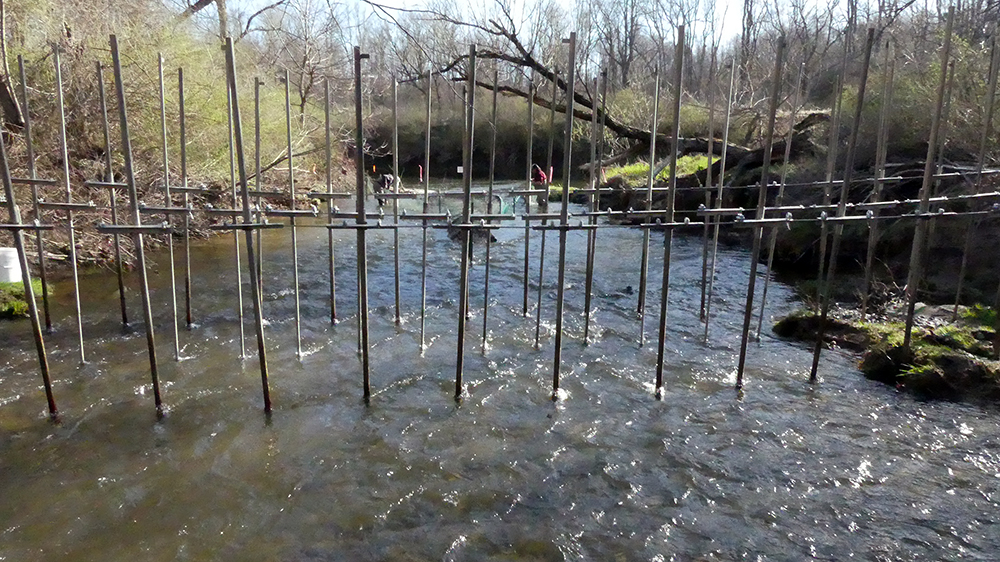
Electrical Barriers Could Be the Answer
Conneaut Creek in Crawford County, PA, is a tributary to Lake Erie and a proven spawning ground for all species of lampreys, making it a perfect spot to research new methods of controlling these troublesome parasites. A cooperative effort between the Pennsylvania Department of Environmental Protection, the Pennsylvania Fish and Boat Commission, the United States Geological Service, the United States Fish and Wildlife Service, and the Great Lakes Fishery Commission was established to come up with a new method to not only eradicate the sea lamprey, but also preserve the northern brook (state endangered species) and the American brook (state threatened species) from being harmed by TFM.
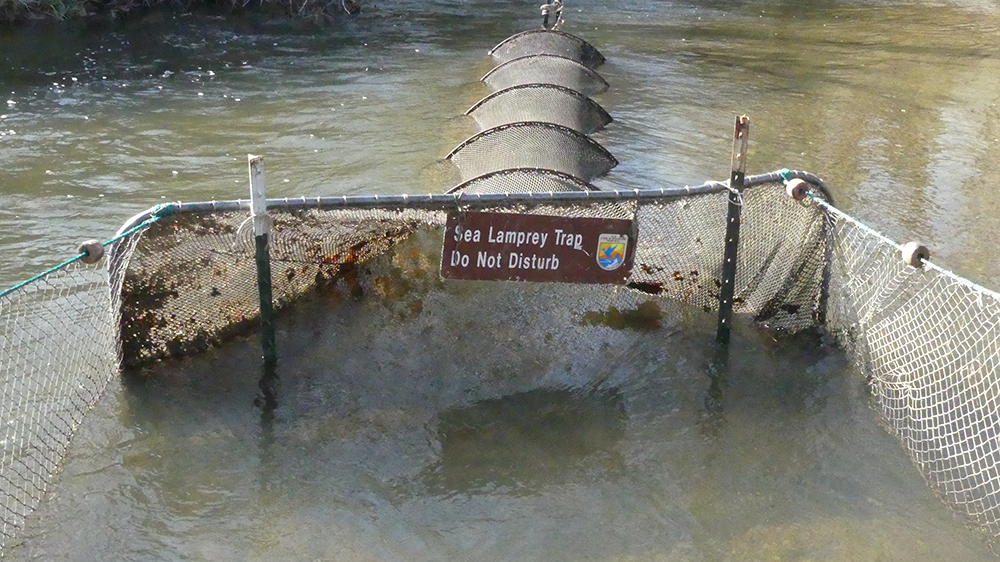
The solution could be in the form of an electrical fence barrier. The barrier, which is the first of its kind, applies an electrical current into the water of Conneaut Creek each evening during the lampreys' normal spawning movement. The barrier acts as a deterrent to the sea lampreys making their way up stream, providing biologists a smaller area in which to employ an effective treatment downstream of the barrier. In addition to the fence, traps (fyke nets) are placed concurrently with the barrier, bracketing the electrical barrier to test the its efficiency as a deterrent. Fyke nets are also set in additional downstream reaches, and additional tributary streams to capture sea lamprey and assist aquatic biologists with population estimates of sea lamprey in the watershed. Biologists check the fence and fyke nets daily to ensure they are free from debris and to ensure other species haven’t become accidentally trapped. Fish found in the nets are recorded by species and measured and weighed to ensure these new options aren’t impacting native fish. Sea lamprey caught in the net are fin clipped and returned further downstream. If the sea lamprey once again returns to the fence area, it will provide data as to possible population sizes in the stream.
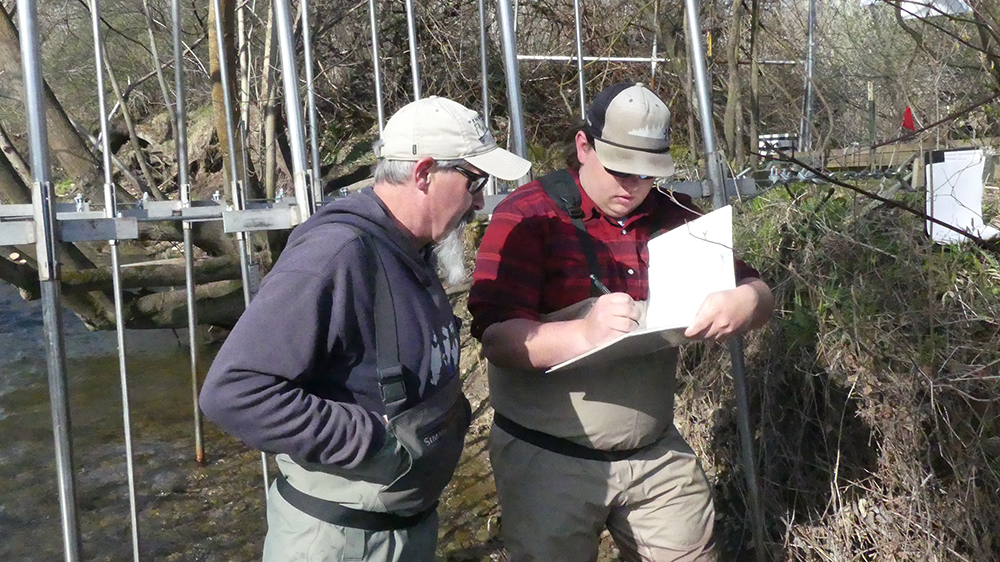
What’s Next?
Biologists will continue to monitor the electric barrier and fyke nets until early June when the sea lampreys spawning season has concluded. Data from the experimental barrier and trapping efforts will be used to determine if these methods are sustainable as an alternative to chemical treatments to control sea lampreys in Conneaut Creek and beyond.